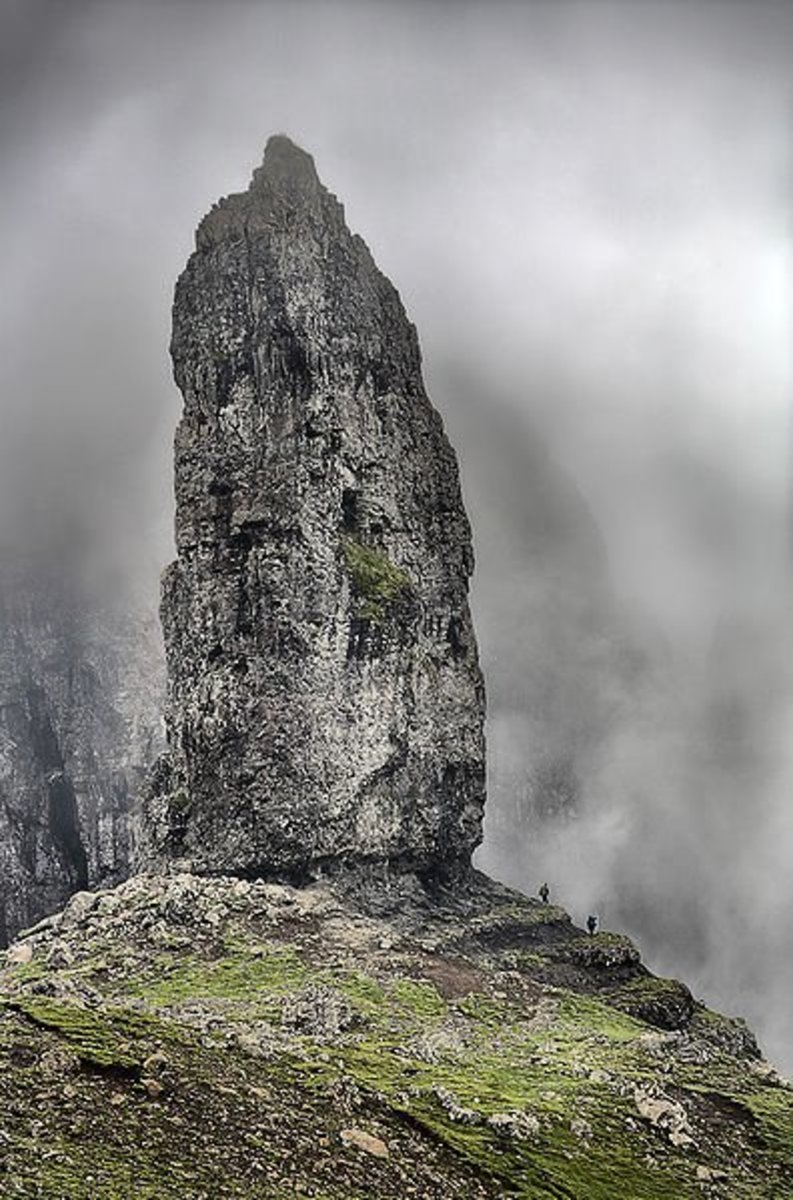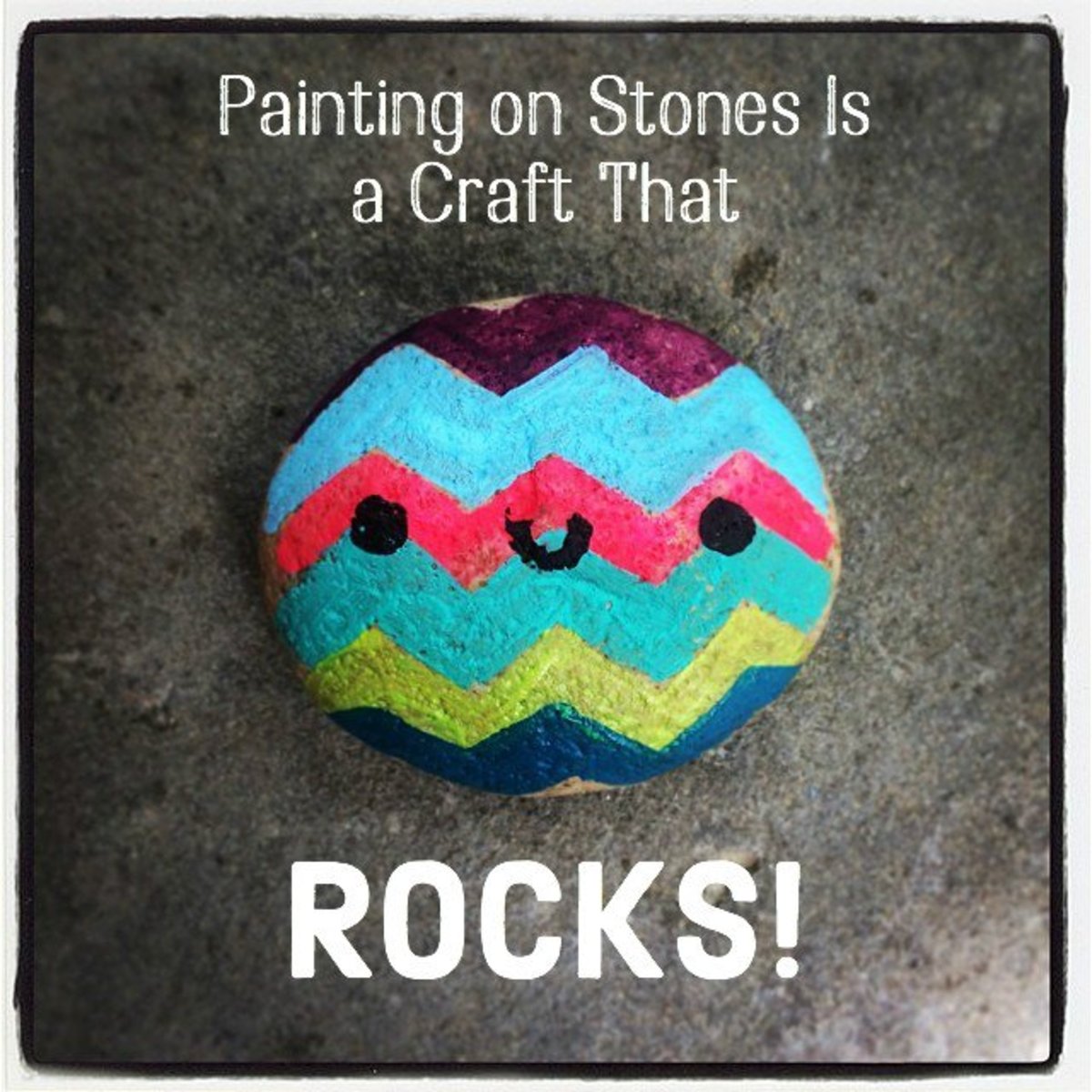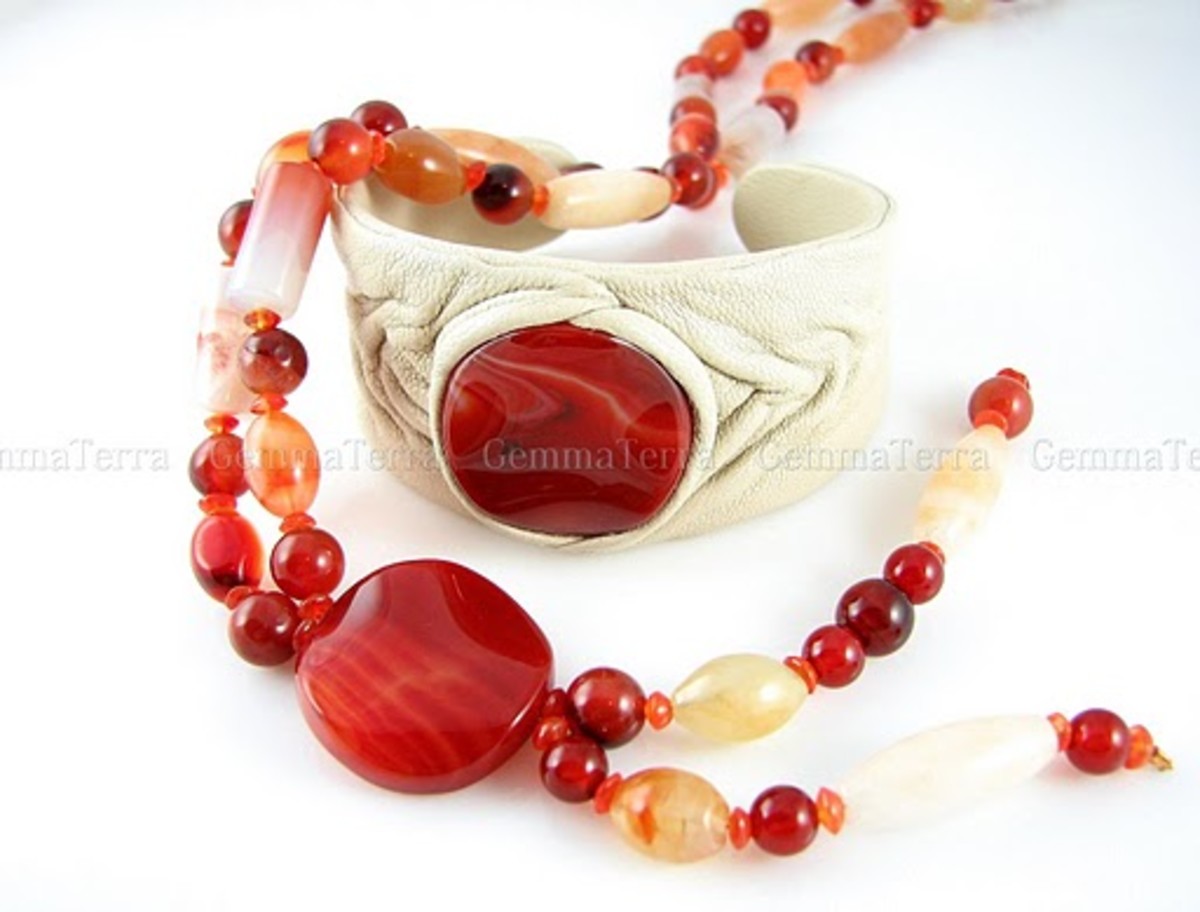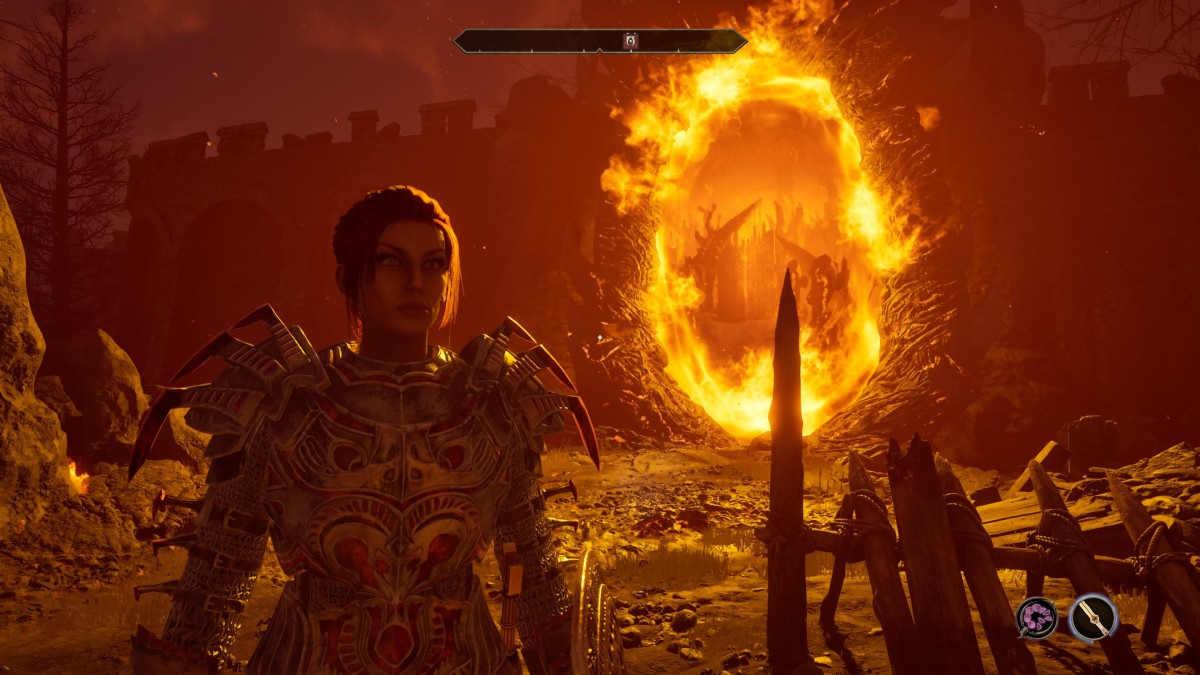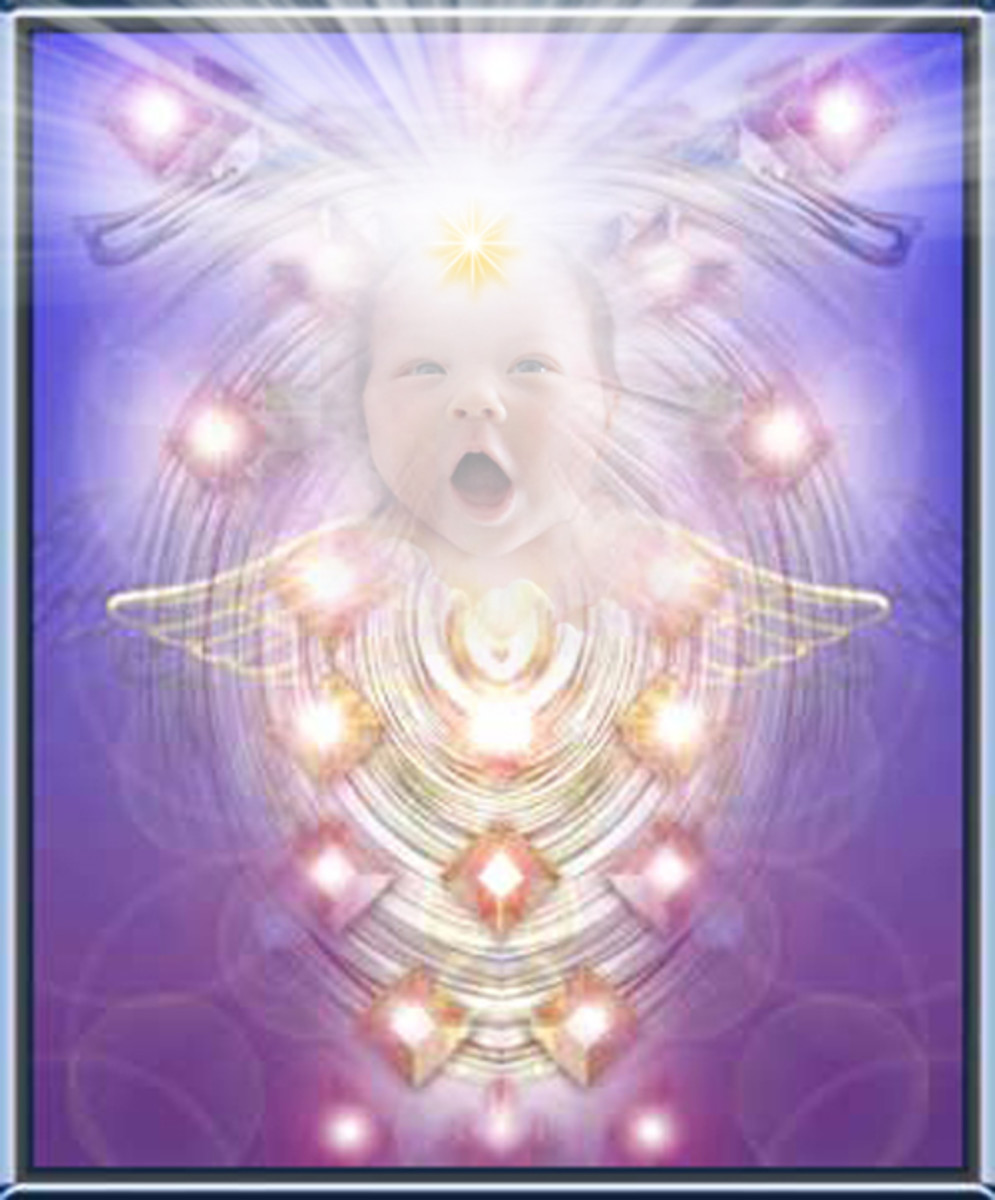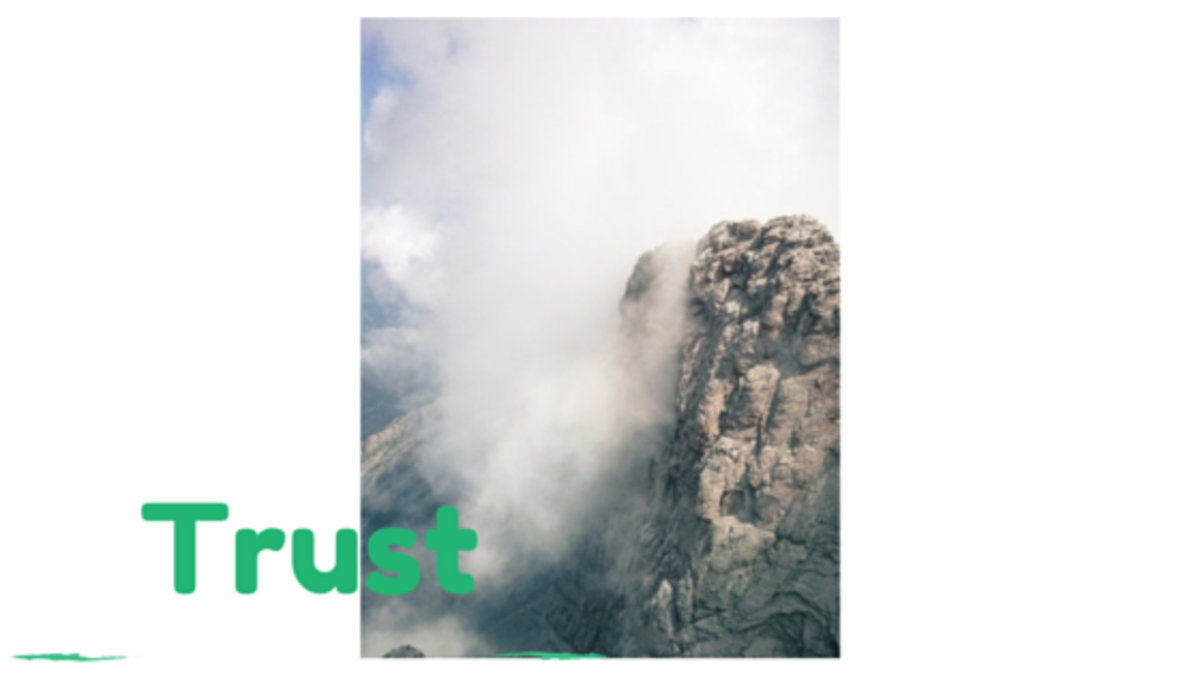Rune Stones Their History And Philosophy.
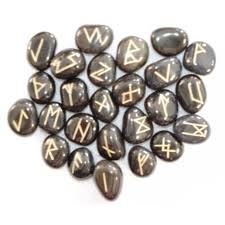
Runes Stones History, Philosophy & Technique
Runes stones have been around since the age of the vikings and some time before that. Some people believe in the mystical properties of these ancient stones and meanings and believe you can tell your own future by casting them correctly. You can buy rune stones from many sources or you can make your own. I'm going to go through how to cast rune stones meanings and how to make your own set of rune stones
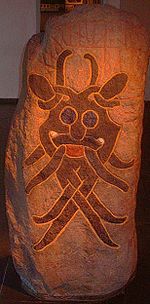
Rune Stones The Arthus Mask Stone
This Rune stone bears a representation of a facial mask as well as having a runic carving which describes a large battle between two kings. Unfortunately there is nowhere near enough evidence to find out which battle the script is referring to. The two most probable battles are the Battle of Svolder and also the Battle of Helgeån. Both of these battles are believed to have taken place around the same time as the Rune stone was raised. Experts at the Moesgård Museum have said the mask was most probably carved on the stone to ward off evil spirits.
Its is thought that that the stone may have been located next to a road to Aarthus from the west. The stone was found with most of the other Rune stones in Aarhus in buildings. It was uncovered underneath Arthus Mill in 1850.
The Rune stone is now an exhibit in MoesgÃ¥rd Museum. The mask on the stone also inspired the museum’s logo.
The text on the stone says that is was raised to act as a memorial by four men in memory of a man named Fúl. The friendship between the five men is thought to have being a félag, which was a joint financial partnership and venture during the Viking Age
Viking Rune Stone with the Longest Rune Script
This is an amazing video of a Rune Stone with the longest Rune script found to date. The msuic is pretty cool to!
Rune Stone: Stone Viking Ship
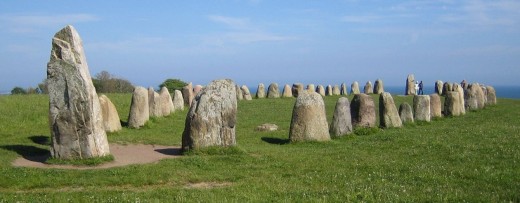
The Ale's Stones are a Megalithic Stone Ship, which is located at Skåne in Southern Sweden. The outline is an impressive 67 metres long. 59 large standing stones make up the outline of the ship. Some of these stones weigh in at 1.8 tonnes each. The two large boulders that signify the stem and stern of the long boat are called the altar and rudder stones. These are not the same material as the other stones but are instead pieces of quartzite. The two pieces are believed to have been taken from a quarry site about 30 kms away, which is near to the town of Brantevik. The other stones are believed to be glacial erratic boulders taken from the local surrounding area.
There is Scanian folklore, which relates to legendary King Ale, whom the folklore says is buried under the stones.
There is a contradicting theory that the outline is not of a ship at all but is said to represent a calendar. Which is something like Stone Henge in England. The evidence to support this theory is that at the winter solstice the sun rises over the stern stone, while at the summer solstice the sun sets over the stem stone. However this theory is strongly argued against by many archaeologists.
The carbon-14 dating system has provided several results. One test revealed that the material is around 5,500 years old. However other results say a date about 1,400 years ago, which considered to be the most likely time for Ales Stenar to have been created. This date would put its erection towards the end of the Nordic Iron Age.
Rune Stones: The Tullstorp Granite Rune Stone
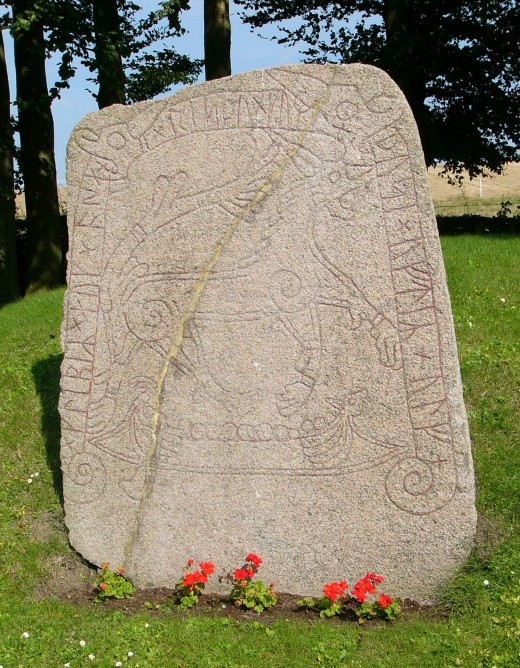
The writing on the 1.7m tall, Granite, Tullsorp rune stone dates from around 1000 AD. The runic text is on a serpent band that wraps around an image of a boat and a monster. The monster is said to be a wolf. No one knows where the stone originally stood. However it was first discovered in 1624 when it was placed in the wall of a local church it was then rediscovered when the church was demolished around 1846. Before the importance of rune stones was properly understood a lot of them were used in the construction of buildings, roads and walls.
There are two theories as to why the Wolf is on top of the ship. One theory is that the carving is said to be of the Ragnarök myth. This would make the wolf Fenrir and the boat Naglfar. However when the inscriptions in the serpent band a are translated into English the text reads. Kleppir/Glippir and Ãsa raised this monument in memory of Ulfr
Ulfr in Old Norse means, “wolf”
Rune Stone Meanings: Uruz
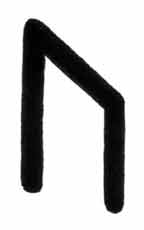
The rune stone Uruz means basically physical strength. For an athlete, hunter or a member of the armed forces, this rune may turn up quite often. It also represents virility and sexuality, which is usually for males however it is not exclusive to males. When this rune is drawn it means there is a major change within ones self. If the reading is for a man then he is going to have a major change to his masculine powers. If the reading is for a woman this signifies that a man is going to make a major change to her life. Which is usually a romantic or physical involvement. Uruz can also point to the masculine powers being over used and an athlete would be best advised to change their training regime to avoid a sports injury. This rune can also advise restraint because, competitiveness maybe getting in the way of advancement. When this rune is drawn inverted it means that the individual is going to go through a weakening of the physical or emotional body and should be mindful of energy sapping situations and people.

The Danish Birth Stones In Jelling
The Jelling stones are in a churchyard in the Danish town of Jelling. They stand between two large mounds. The stones show the change between the Norse pagan religion and Christianity. One of the stones has a carving of Christ standing in a shape of a cross and entangled in what looks like branches of a tree. It is believed that that this depicts Christ replacing the pagan religion and the Old Norse god Odin. Who in myth hung for nine nights in the tree Yggdrasill. The other side of the stone has a serpent wrapped around a lion.
The largest stone is often referred to as Denmark’s birth stone. This is strongly identified with the creation of Denmark as a nation state. Both stones have one the earliest carvings of the name “Danmark”.
After a thousand years of erosion, damage and cracks were starting to appear and in 2008 experts said that the stones must be moved to an indoor environment. The stones were left in place but have now been encased in a temperature-controlled environment to stop the erosion getting worse.
Originally the stones were painted however most of it has flaked away. There is enough to see what colours were used and in 1955 a cast was taken of both stones for a festival in London. The casts were painted how they would have originally looked and now stand in a Danish church in St Catherine’s precinct in London.
The carvings on the largest of the two stones when translated in to English reads "King Haraldr ordered this monument made in memory of Gormr, his father, and in memory of Thyrvé, his mother; that Haraldr who won for himself all of Denmark and Norway and made the Danes Christian."
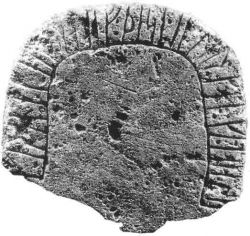
The Island Of Berezanji Rune Stone
This Rune Stone was uncovered on the small Ukrainian island of Berezanji in the Dneper River.
At the time the stone was uncovered the land belonged to the Russian Empire. It was then taken over by the U.S.S.R. When Soviet Union broke up the land passed to the Ukraine. The Rune Stone currently resides in the Odessa archaeological museum
The stone was found in 1905 during an archaeological dig of a grave-mound on the island. It was found under the head and shoulders of a skeleton and laid in the tomb with the letters facing towards the ground.
The stone was originally part of a much larger Rune that stood on one of the grave mounds. This must have been broken very shortly after it had been erected, as there was very little wind erosion to the stone. It was then placed into the tomb during or shortly after a burial.
The lettering is from the 11th century and says: -
: krani . kerþi . half . þisi . iftir . kal . fi . laka . sin
When these letters are translated into English: "Grani made this grave-mound after Karl, his comrade."
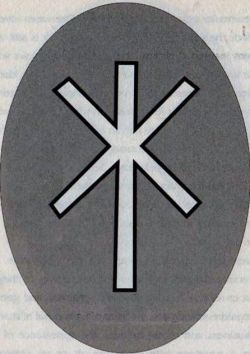
The Meaning Of the Rune Stone Joy
This is a great Rune Stone that people are excited to see. Joy is linked with the Hawthorn tree and Yellow
Joy, as it name suggests means great excitement and a time of fun. It is also associated with the time of spring. As with spring bringing forth-new life after the dark periods of winter. Joy can mean a happy time or a reuniting of people and feelings long since forgotten
If the subject is thinking romantic thoughts it can mean a joining of hands at a wedding and a new life coming into the family.
A lonely unhappy person who draws the Rune Joy can have an old flame rekindled which will be successful for the second time round or a family member long since lost can come back to them.
In business life Joy spells a time of good fortune. An old friend or business partner may resurface with positive implications the future.
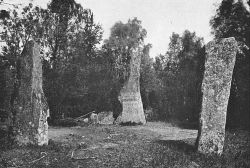
The Curse Of the Björketorp Rune Stones
During the 6th and 7th century a circle of Rune Stones were raised and carved. The tallest of the three stones measures over 2.5 metres high. This is the only stone that had inscriptions on it.
There is a mixture of both younger and elder Futhark letters in the carving. This is because there was a transition period of alphabets at this time.
The scholars in this field have conflicting theories as to why the stones were put in a circle. There are three main theories to explain this.
The earlist of the three theory’s says that the circle actually encompasses a burial site. However there was a major archaeological dig at the stones in 1914 and no finds were ever made outside or inside the stone circle. This made rise to the theory that the site was actually meant to be a memorial site, which hid the whereabouts of the true burial plot. This also could have been a significant distance from the circle. The next theory said it was to help with fertility of the local population and was a shrine to Odin. The Third theory said it was to mark a boundary between a Northern Germanic tribe called the Daner and the land of the Swedes.
There are two carvings on the largest of the three stones.
The shorter carving on one side says: - uþArAbA sbA
The longer carving on the front of the stone says hAidz runo ronu fAlAhAk hAiderA ginArunAz ArAgeu hAerAmAlAusz utiAz welAdAude sAz þAt bArutz
If you translate the short carving into English it says: - I prophesy destruction / prophecy of destruction.
Translation of long carving into English: - I, master of the runes (?) conceal here runes of power. Incessantly (plagued by) maleficence, (doomed to) insidious death (is) he who breaks this (monument).
This is basically a curse to protect the stones or what ever they mark. Weather it be a boundary marker, a shrine or a memorial
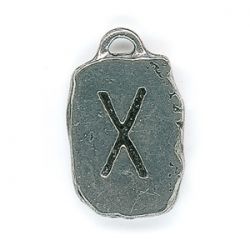
The Meaning Of Gyfu
The Rune Stone Gyfu is linked with the Elm Tree (sadly now extinct in Britain and Europe) and the colour red.
People who use rune stones are very happy when Gyfu appears. Gyfu Basically means a gift, blessings, a surprise or acing of giving. For lovers it can mean an exchange of tokens of love.
Lovers who select Gyfu are in for joyous time. As it could mean they about to receive a beautiful gift for a previously unknown source. Its also possible it can mean a proposal of marriage.
With regards to Career or business dealings it can mean a promotion, job offer, a Raise, a large bonus is about to be paid or a gift from a client
To reinforce the effects of Gyfu one should observe the Old Norse tradition of when a Gift is received one is given in return.
Runic letters are now well over 1500 years old and Gyfu, which is a large "X”, is still in use to this day. Each year on the 14th of February lovers will put Gyfu on the reverse of a sealed note, or they will write it inside a card. If they give a gift they will write "GYFU" on the wrapping of the gift.
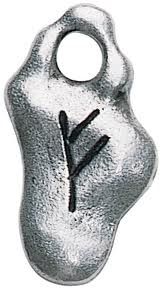
The Meaning Of the Rune Stone Feoh
This rune is Feoh it's linked with the Elder tree and the colour brown. In runic language it means wealth.
During the age of Vikings wealth could be measured in heads of cattle or how much land a man had at his disposal. This rune has subtle meaning today. It still means wealth but is also linked with hard work and not giving up. There may in the future be wealth for you but it will have to be earned through hard graft and determination
Feoh also means we will have to make sacrifices we have to pay for riches such as our time, pleasures and pastimes
When linked with romance, Feoh means that any romance will prosper and grow. However just like wealth there is going to be a lot determination and perseverance. The one you want will succumb to you affections but you've got some chasing to do beforehand
When Feoh turns up in readings it means. You can put the champagne on ice but I wouldn't go cracking the bottle just yet.
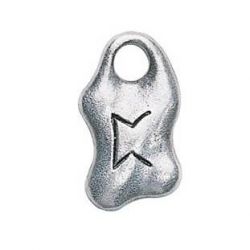
The Meaning of The Rune Stone Peorth
The rune stone Peorth is associated with the Silver Birch tree and the colour red.
This is a tantalising rune stone and long ago it represented dice, a game of chance. Over the years more layers have been added to the stones meaning. Now Peorth suggests mystery, intrigue and hidden emotions.
When the subject is thinking about romance it could mean that they are about to embark on a clandestine affair or worse they partner is about to or already has. It could also hint at a secret admirer who is unknown but is about to make their intentions known.
In business or career it could mean there is more going on behind the scenes than the subject knows and they would be well advised to find out. The subject may be letting themselves be drawn intro a secret plot. While this may a bad thing, the subject must be careful and not forget, Peorth means chance, as everyone knows, gamblers have a habit of losing more than their shirts
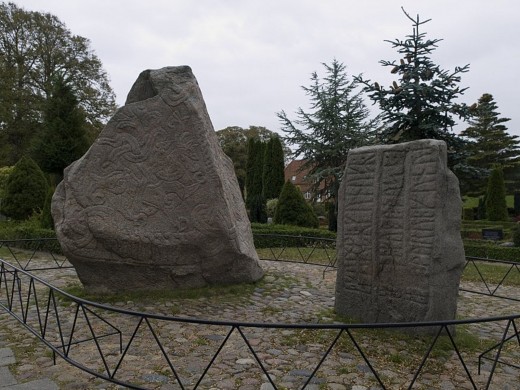
- NOVA | Write Your Name in Runes
See your name spelled in runes and learn the meaning of each of the letters in the Viking alphabet.
Rune Stones How They Were Created
theree are a ton of theorries to how and when the the runic aplhabet came about and not one opf them can be proven with any certaintyn except that it was formed before 200ad . the most favoured theory is one thet it was a inspared by th early greek and latin aplphabet and was started by the goths and germanic tribes who lived north of the back sea.
Kauno, Cen
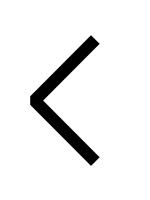
Meaning Of the Rune Stone Kauno
Meaning:- Fire, light, burning, Knowledge, opening, ulcer or harm. In old English its pronounced Cen and is still used today in the word "Beacon." Kauno's is related to fire, light, warmth and knowledge. Kauno is said to put light on a dark path. It expels the dark of the unknown.Kauno aids the real picture Drawing This rune gives an understanding that must lead to an action. Light in the darkness suggests spiritual realization.. This rune also represents the natural warmth and friendship of the home fire and thus, good health.
In its suspect "ulcer" translation it can mean a doorway or path leading from the darkness to the light. It can also be a warning to beware of heat or light. It can also mean the person is in a physical danger. He or she will need to take care against accidents. Any illness must be treated and clear away your mental dilemmas.



